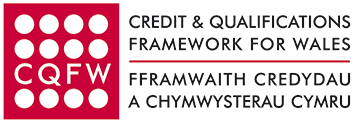| 1. |
Read, write, order and compare whole numbers with up to seven digits. |
|
| 1.1 | Read and write whole numbers with up to seven digits in digit form. | | 1.2 | Read and write names of whole numbers with up to seven digits. | | 1.3 | Identify place values in whole numbers with up to seven digits including the use of zero as a place holder. | | 1.4 | Order whole numbers with up to seven digits in order of size. | | 1.5 | Read and record the symbols for greater than > and less than <. |
|
| 2. |
Approximate numbers with up to seven digits by rounding to different degrees of accuracy. |
|
| 2.1 | Round whole numbers with up to seven digits to different degrees of accuracy e.g. to the nearest 10, 100, 1000, million, depending on context. |
|
| 3. |
Understand negative numbers in the context of temperature. |
|
| 3.1 | Identify 0ºC as the temperature at which water freezes. | | 3.2 | Identify negative temperatures as indicating temperatures below 0ºC. |
|
| 4. |
Read, write, order and compare common fractions and mixed numbers. |
|
| 4.1 | Identify (e.g. from diagrams) and write common unit and non-unit fractions in digit form. | | 4.2 | Read and write common unit and non-unit fraction names. | | 4.3 | Read and write common mixed numbers in digit form e.g. 1 1/4. | | 4.4 | Read and write common mixed number names. | | 4.5 | Identify and write common equivalent fractions. | | 4.6 | Arrange in order of size a set of common unit, non-unit fractions and mixed numbers. |
|
| 5. |
Read, write, order and approximate numbers with up to three decimal places. |
|
| 5.1 | Read and write numbers with up to three decimal places in digit form. | | 5.2 | Read and write names of numbers with up to three decimal places. | | 5.3 | Identify place value in numbers with up to three decimal places. | | 5.4 | Arrange numbers with up to three decimal places in order of size. | | 5.5 | Round numbers with up to three decimal places to the nearest whole number. | | 5.6 | Round numbers with up to three decimal places to one decimal place. | | 5.7 | Round numbers with up to three decimal places to two decimal places. |
|
| 6. |
Understand whole number percentages. |
|
| 6.1 | Read and write the percentage symbol %. | | 6.2 | Identify 100% as the whole e.g. 100% of £500 is £500 and 40/40 in a test is 100%. | | 6.3 | Interpret simple percentage in everyday situations. |
|
| 7. |
Recognise equivalences between common fractions, decimals and percentages. |
|
| 7.1 | Write decimals with up to two decimal places as fractions out of a hundred. | | 7.2 | Write common fractions as equivalent fractions out of a hundred (half, quarters, fifths, tenths). | | 7.3 | Write whole number percentages as fractions out of a hundred. | | 7.4 | Identify common fraction, decimal and percentage equivalents e.g. 0.5 = 50 / 100 (1/2) = 50 %. |
|
